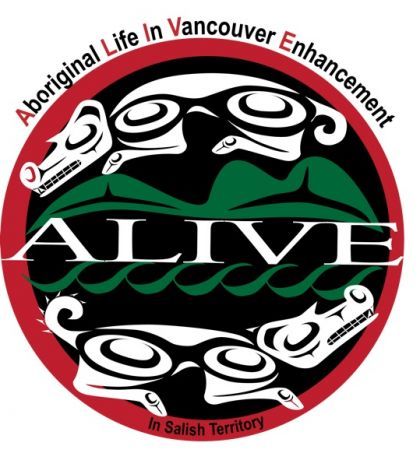Features
You are here
Reconciliation in action

July 28, 2015
For the last five years in Vancouver, ALIVE (Aboriginal Life In Vancouver Enhancement) has been working with urban Aboriginal people and others to try to mend some of the harm produced by centuries of colonialism.
Using a place-based strategy that has its roots in Indigenous culture and in past community organizing like the Black Panthers, Aboriginals and other marginalized people are getting the services that colonialism has traditionally denied them. With over 52,000 Aboriginal people, Vancouver has the third largest population of Aboriginal people in Canada, after Winnipeg and Edmonton.
ALIVE
ALIVE is implementing a place-based approach looking at the environmental, social, and economic situation of Aboriginals in Vancouver. With this holistic approach they try to organize the services to get people housing, education and the support they need to succeed. This approach is based on working with people, not for or on them. They are also trying to get services in the neighbourhoods Indigenous people are living in, instead of pulling everyone to the downtown east side.
ALIVE works with a place-based framework to “to promote, enhance and foster the social, economic, and cultural well-being and health of Aboriginal peoples in Vancouver . . . A large proportion of Aboriginal peoples in our city report multiple barriers to participation, including feelings of stigmatization and negative experiences accessing supports and resources such as housing, education, childcare and employment. ALIVE believes that, using a place-based strategy, we can create avenues for Aboriginal citizens to have meaningful impacts in their communities and to negotiate their role in the urban 'place' on their own terms.” The emphasis on services in the communities where Aboriginal people live is intentional. Now, many services are centred around the east side of the city, especially the poorest sections.
RISE (Responsible Indigenous Strategy for Empowerment) is a recent success. A team of Aboriginal youth have been recruited to work in five community centres across the city. There they are working with the community centre staff and youth in the community to identify and develop programs for youth. They will be building networks with local youth and community partners. These unionized positions are paid for by the parks board.
Conference
Dr. Dzung Vo is a paediatrician and adolescent medicine specialist at BC Children's Hospital. Speaking on a video produced for the Reconciliation in Action conference, he explains, “A place based strategy is a strategy where we come to where people live, we meet them where they're at, and we work with the neighbourhood, the communities, the existing strengths in the neighbourhood, the social connectendness, and the social networks to help promote health and well being and resilience. And it's a way of pulling down barriers. So many young people have health needs that are being unmet and if we just stayed in Children's Hospital all day just waiting for them to come, they would never come.”
Mary-Ellen Turpel-Lafond, BC’s first Representative for Children and Youth spoke at the first Reconciliation in Action conference in June 2014, stating that “children and families need services in the communities that they live in, from the people that they know.” As she explained, “We've had enough judgement and rejection, so that place of love, that place of acceptance is so important ... it's hard to teach that in a university in a school in a system. The only way we really learn that is by being connected to each other.”
ALIVE has put together two annual Reconciliation in Action: Where change happens conferences and has plans to hold them more often. These events, “bring together residents, civil society groups, government, local businesses and community leaders to celebrate and share community aspirations and successes, as well as innovative community strategies.”
The most recent conference featured speakers such as Grand Chief Doug Kelly, Chair of the First nations Health Council, Cheryl Casimir, First Nations Summit Task Group, and Mary-Ellen Turpel-Lafond. There were activities and games for children and representatives of programs from pre-natal to services for seniors. Executive Director Scott Clark explained that “the intent was to show case our village that raises our children. This is what a village looks like in an urban community.”
As ALIVE continues to work against the colonialism and racism of traditional community services, we can all learn a lot from their methods and successes
For more information visit www.alivesociety.ca
This article should be read alongside of Working against colonialism and austerity
Section:










